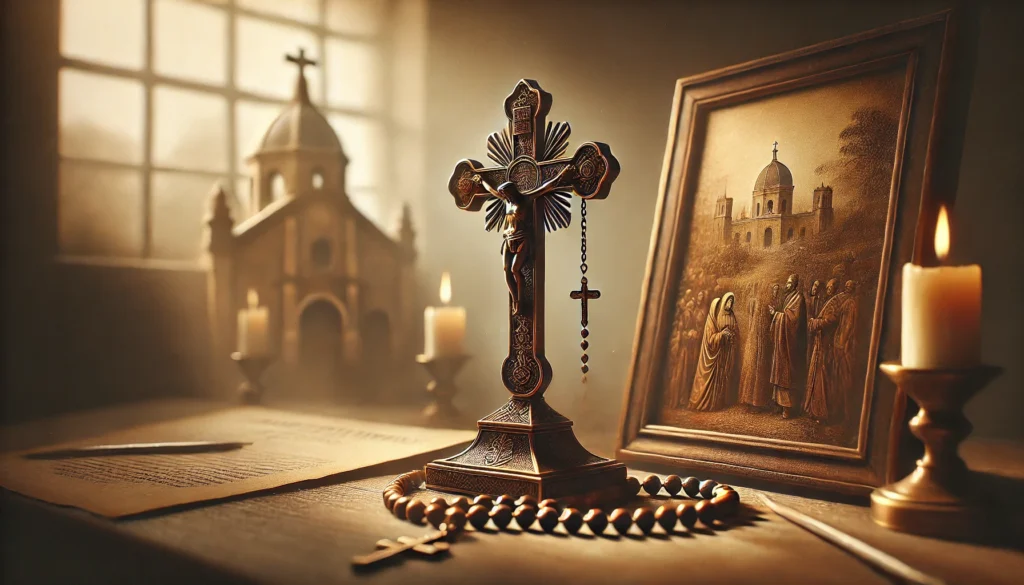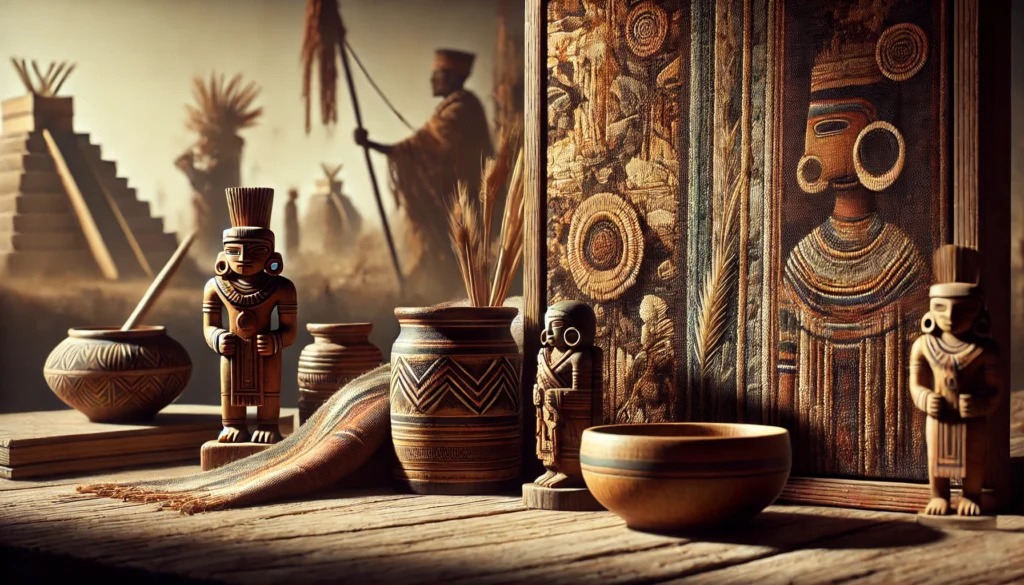The arrival of Spanish colonizers in the Philippines in 1565 marked the beginning of a significant cultural transformation that would shape the archipelago for centuries to come. Spanish rule in the Philippines lasted for more than three centuries, from 1565 to 1898. During this period, the interaction between the indigenous Filipino population and the Spanish colonizers gave rise to a unique cultural blend known as Mestizo culture.
The Spanish colonization of the Philippines was driven by several factors:
- Expansion of the Spanish Empire
- Spread of Catholicism
- Economic interests (particularly in spices and natural resources)
- Strategic location for trade routes
This prolonged period of colonization resulted in profound changes to Philippine society, governance, religion, and culture. The Spanish influence permeated various aspects of Filipino life, leading to the emergence of a distinct Mestizo identity.
Definition and Origins of Mestizo Culture
Mestizo culture refers to the blending of Filipino and Spanish traditions, customs, and practices that occurred during the colonial period. The term “Mestizo” originally described individuals of mixed Spanish and indigenous Filipino ancestry. However, over time, it came to represent a broader cultural phenomenon that encompassed not just racial mixing but also the fusion of cultural elements.
The origins of Mestizo culture can be traced to several key factors:
- Intermarriage between Spanish colonizers and indigenous Filipinos
- The establishment of a colonial administration system
- The introduction of Roman Catholicism
- The implementation of Spanish education and language policies
These factors contributed to the gradual integration of Spanish and Filipino cultural elements, creating a unique hybrid culture that would become an integral part of Philippine identity.
Impact of Religion on Mestizo Culture
One of the most significant factors in the development of Mestizo culture was the introduction and spread of Roman Catholicism. The role of the Catholic Church in shaping Philippine society cannot be overstated. The Spanish colonizers viewed the conversion of the indigenous population to Catholicism as a primary objective of their colonial mission.
The impact of Catholicism on Mestizo culture was multifaceted:
- Introduction of new religious practices and beliefs
- Establishment of a parish-based social structure
- Integration of Catholic festivals and rituals into local traditions
- Development of religious art and architecture
The syncretic nature of Filipino Catholicism, which blended indigenous beliefs with Catholic doctrine, became a hallmark of Mestizo culture. This unique form of Catholicism continues to play a significant role in contemporary Philippine society.
Language and Education in Mestizo Society
The Spanish colonial administration implemented policies that had a profound impact on language and education in the Philippines. Spanish became the language of government, commerce, and education, while indigenous languages were largely relegated to informal and domestic spheres.
Key aspects of language and education in Mestizo society included:
- Establishment of Spanish-medium schools
- Introduction of the Latin alphabet for writing indigenous languages
- Development of a Spanish-based creole language (Chavacano)
- Creation of a bilingual elite class fluent in both Spanish and local languages
The linguistic legacy of Spanish colonization is evident in the numerous Spanish loanwords found in Filipino languages today. Moreover, the education system established during the colonial period laid the foundation for the development of a Mestizo intellectual class that would play a crucial role in the Philippine independence movement.
Social Hierarchy and Class Structure
The emergence of Mestizo culture was accompanied by significant changes in Philippine social hierarchy and class structure. The colonial period saw the development of a complex social stratification system that placed Spanish-born individuals (peninsulares) at the top, followed by Spanish mestizos, Chinese mestizos, indigenous elites (principalia), and the general indigenous population.
| Social Class | Description |
|---|---|
| Peninsulares | Spanish-born individuals |
| Insulares | Spanish individuals born in the Philippines |
| Spanish Mestizos | Individuals of mixed Spanish and Filipino ancestry |
| Chinese Mestizos | Individuals of mixed Chinese and Filipino ancestry |
| Principalia | Indigenous elite class |
| Indios | General indigenous population |
This social hierarchy had far-reaching implications for access to education, economic opportunities, and political power. The Mestizo class, particularly the Spanish and Chinese Mestizos, often occupied a privileged position in colonial society, serving as intermediaries between the Spanish administration and the indigenous population.
Economic Transformations and Mestizo Entrepreneurship
The colonial period brought about significant economic transformations in the Philippines, with the Mestizo class playing a crucial role in these changes. The emergence of a Mestizo entrepreneurial class was one of the most notable developments of this era.
Key economic changes during the colonial period included:
- Introduction of new agricultural crops and techniques
- Development of hacienda system (large agricultural estates)
- Expansion of international trade
- Growth of urban centers and commercial activities
Mestizo entrepreneurs, particularly Chinese Mestizos, became prominent in various economic sectors, including agriculture, trade, and manufacturing. Their economic success contributed to the consolidation of Mestizo culture as a distinct and influential element of Philippine society.
Artistic and Cultural Expressions of Mestizo Identity
The blending of Filipino and Spanish traditions gave rise to unique artistic and cultural expressions that reflected the hybrid nature of Mestizo identity. Mestizo culture manifested itself in various art forms, including:
- Architecture: The development of colonial-era churches, houses, and public buildings that combined Spanish and indigenous design elements.
- Visual arts: The emergence of religious paintings and sculptures that incorporated local motifs and styles.
- Music and dance: The creation of new musical genres and dance forms that fused Spanish and Filipino elements.
- Literature: The development of a rich literary tradition that included both Spanish-language works and vernacular literature influenced by Spanish forms.
These artistic and cultural expressions played a crucial role in shaping Philippine national identity and continue to be celebrated as important elements of the country’s cultural heritage.
Mestizo Culture in Everyday Life
The influence of Mestizo culture extended beyond the realms of high art and elite society, permeating various aspects of everyday life in the Philippines. The blending of Filipino and Spanish traditions was evident in:
- Cuisine: The incorporation of Spanish ingredients and cooking techniques into Filipino dishes.
- Clothing: The adoption of Spanish-influenced clothing styles, particularly among the upper classes.
- Social customs: The integration of Spanish etiquette and social norms into Filipino society.
- Festivals and celebrations: The fusion of Catholic religious observances with indigenous festivities.
These everyday manifestations of Mestizo culture contributed to its enduring impact on Philippine society, even after the end of Spanish colonial rule.
The Role of Mestizos in the Philippine Revolution
As the 19th century progressed, the Mestizo class, particularly those educated in European ideas of liberalism and nationalism, began to play a significant role in the growing movement for Philippine independence. Mestizo intellectuals and leaders were at the forefront of the Philippine Revolution against Spanish colonial rule.
Notable Mestizo figures in the Philippine Revolution included:
- José Rizal: National hero and author of influential novels criticizing Spanish colonial rule
- Marcelo H. del Pilar: Journalist and propagandist for Philippine reform and independence
- Andrés Bonifacio: Founder of the Katipunan revolutionary society
- Emilio Aguinaldo: First President of the Philippine Republic
The involvement of Mestizos in the independence movement reflected the complex relationship between Mestizo culture and Philippine national identity, as well as the evolving nature of Mestizo identity itself.
Legacy of Mestizo Culture in Modern Philippines
The impact of Mestizo culture continues to be felt in contemporary Philippine society, despite the end of Spanish colonial rule more than a century ago. The legacy of Mestizo culture is evident in various aspects of modern Filipino life:
- Language: The prevalence of Spanish loanwords in Filipino languages
- Religion: The continued dominance of Roman Catholicism
- Legal system: The influence of Spanish civil law on the Philippine legal code
- Cuisine: The enduring popularity of Filipino-Spanish fusion dishes
- Arts and culture: The preservation and celebration of Mestizo cultural heritage
While the concept of Mestizo identity has evolved over time, the cultural synthesis that occurred during the colonial period remains an integral part of Philippine national identity.
Challenges and Controversies in Interpreting Mestizo Culture
The study and interpretation of Mestizo culture in the Philippines have been subject to ongoing debates and controversies. Scholars and cultural critics have raised important questions about:
- The power dynamics inherent in cultural hybridization
- The role of Mestizo culture in perpetuating social inequalities
- The authenticity and representation of indigenous cultures within Mestizo traditions
- The impact of Mestizo culture on Philippine national identity formation
These debates reflect the complex and sometimes contentious nature of cultural hybridity and its implications for postcolonial societies like the Philippines.
Mestizo Culture in a Globalized World
In the 21st century, Mestizo culture in the Philippines continues to evolve in response to global influences and changing social dynamics. The impact of globalization on Mestizo culture is evident in:
- The revival of interest in Spanish language and culture among younger generations
- The reinterpretation of Mestizo traditions in contemporary art and popular culture
- The role of the Filipino diaspora in preserving and reimagining Mestizo cultural elements
- The influence of digital technologies in disseminating and transforming Mestizo cultural expressions
These developments highlight the dynamic nature of Mestizo culture and its ongoing relevance in shaping Philippine identity in a globalized world.
Disclaimer: While every effort has been made to ensure the accuracy and currency of the information presented in this blog post, the field of historical and cultural studies is subject to ongoing research and interpretation. Readers are encouraged to report any inaccuracies or provide additional insights for prompt review and correction. The content of this post is based on information available up to 2023.




